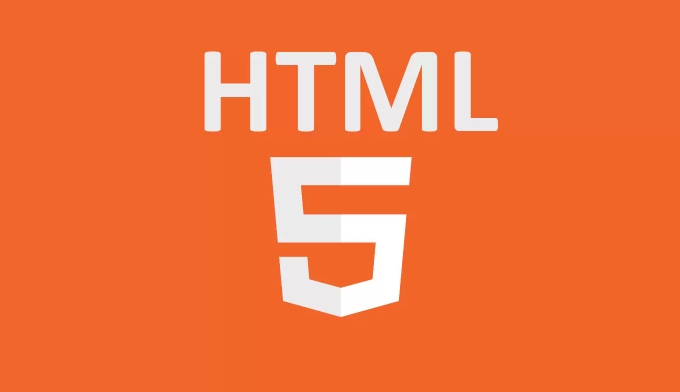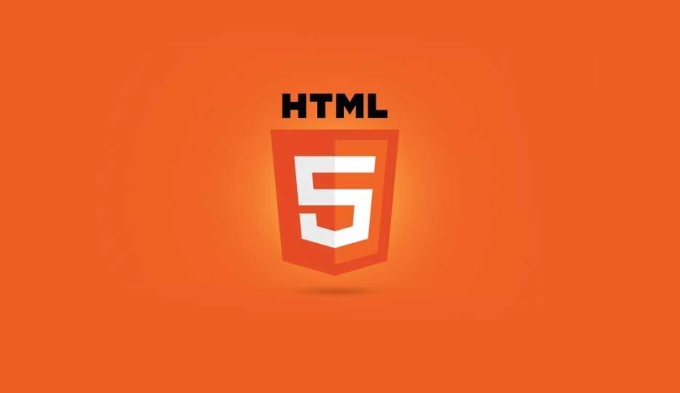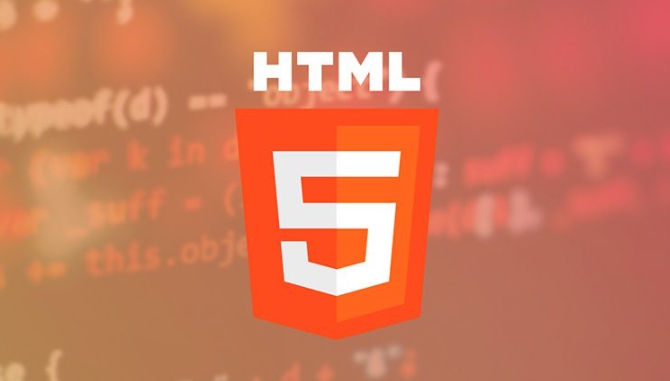Securing HTML5 web applications against common vulnerabilities
Jul 05, 2025 am 02:48 AMThe security risks of HTML5 applications need to be paid attention to in front-end development, mainly including XSS attacks, interface security and third-party library risks. 1. Prevent XSS: Escape user input, use textContent, CSP header, input verification, avoid eval() and direct execution of JSON; 2. Protect interface: Use CSRF Token, SameSite Cookie policies, request frequency limits, and sensitive information to encrypt transmission; 3. Securely use third-party libraries: periodic audit dependencies, use stable versions, reduce external resources, enable SRI verification, ensure that security lines have been built from the beginning of development.

Security issues are often easily overlooked during front-end development, especially when building HTML5 web applications. Many people think that as long as the code is written correctly, the function will be free, but in fact, many common vulnerabilities are hidden in the details. If your application does not deal with these security risks, the least data will be leaked, and the worst system will be compromised.

The following lists several of the most common and most overlooked security issues, as well as corresponding protection suggestions.

Prevent cross-site scripting attacks (XSS)
XSS is one of the most classic security vulnerabilities in web applications. Attackers inject malicious scripts into pages that execute when other users access the page, which may steal cookies, hijack sessions, or even initiate fake requests.
How to prevent it?

- All user input must be escaped, such as using
textContentinstead ofinnerHTMLto insert content. - Use CSP (Content Security Policy) header to limit which source scripts can be executed.
- Input verification is done on both the server and the front end, filtering or encoding special characters.
- Don't use
eval()easily or execute JSON strings directly as JSS.
For example: If the user comment box allows submission of content like <script>alert('xss')</script> and is displayed directly on the page without escape, the script will be executed.
Protect your forms and API interfaces
Many developers only focus on whether the front-end functions are normal, but ignore the security of the back-end interface. Especially under the front-end separation architecture, the front-end calls the back-end API through AJAX. If there is no proper protection, it is easy to become the target of attack.
Some practical suggestions:
- Use CSRF Token to prevent cross-site request forgery attacks, especially in key operations such as login and payment.
- Enable the SameSite Cookie Policy for all POST requests to avoid cookies being carried by third-party websites.
- Set reasonable request frequency limits to prevent brute force or DDoS attacks.
- Sensitive information should not be transmitted plain text, such as passwords should be encrypted with hash, and important fields should be considered to use HTTPS encryption channels.
For example, a login interface without a frequency limit may be blocked by an attacker trying a combination of username and password, resulting in account leaks.
Securely use third-party libraries and plug-ins
Modern web applications are inseparable from various third-party JavaScript libraries and components, but this also brings potential security risks. Some older versions of the library have known vulnerabilities, and the consequences will be serious once exploited.
What should be done?
- Check project dependencies regularly and use tools like
npm auditto find risks. - Try to use the official stable version and do not introduce unknown JS files at will.
- Reduce unnecessary dependencies, the less external resources mean the smaller the attack surface.
- Use Subresource Integrity (SRI) technology to ensure that the loaded remote scripts are not tampered with.
For example, if you use jQuery 2.x version, and it has a DOM XSS vulnerability, even if you do not write the wrong code yourself, it may be exploited by the attacker.
Basically, these common problems and solutions. Safety is not something that can be achieved overnight, but as long as you pay conscious attention to these points from the beginning of development, you can greatly reduce risks. Don't wait until something happens before thinking about remedy it.
The above is the detailed content of Securing HTML5 web applications against common vulnerabilities. For more information, please follow other related articles on the PHP Chinese website!

Hot AI Tools

Undress AI Tool
Undress images for free

Undresser.AI Undress
AI-powered app for creating realistic nude photos

AI Clothes Remover
Online AI tool for removing clothes from photos.

Clothoff.io
AI clothes remover

Video Face Swap
Swap faces in any video effortlessly with our completely free AI face swap tool!

Hot Article

Hot Tools

Notepad++7.3.1
Easy-to-use and free code editor

SublimeText3 Chinese version
Chinese version, very easy to use

Zend Studio 13.0.1
Powerful PHP integrated development environment

Dreamweaver CS6
Visual web development tools

SublimeText3 Mac version
God-level code editing software (SublimeText3)

Hot Topics
 Audio and Video: HTML5 VS Youtube Embedding
Jun 19, 2025 am 12:51 AM
Audio and Video: HTML5 VS Youtube Embedding
Jun 19, 2025 am 12:51 AM
HTML5isbetterforcontrolandcustomization,whileYouTubeisbetterforeaseandperformance.1)HTML5allowsfortailoreduserexperiencesbutrequiresmanagingcodecsandcompatibility.2)YouTubeofferssimpleembeddingwithoptimizedperformancebutlimitscontroloverappearanceand
 What is the purpose of the input type='range'?
Jun 23, 2025 am 12:17 AM
What is the purpose of the input type='range'?
Jun 23, 2025 am 12:17 AM
inputtype="range" is used to create a slider control, allowing the user to select a value from a predefined range. 1. It is mainly suitable for scenes where values ??need to be selected intuitively, such as adjusting volume, brightness or scoring systems; 2. The basic structure includes min, max and step attributes, which set the minimum value, maximum value and step size respectively; 3. This value can be obtained and used in real time through JavaScript to improve the interactive experience; 4. It is recommended to display the current value and pay attention to accessibility and browser compatibility issues when using it.
 Adding drag and drop functionality using the HTML5 Drag and Drop API.
Jul 05, 2025 am 02:43 AM
Adding drag and drop functionality using the HTML5 Drag and Drop API.
Jul 05, 2025 am 02:43 AM
The way to add drag and drop functionality to a web page is to use HTML5's DragandDrop API, which is natively supported without additional libraries. The specific steps are as follows: 1. Set the element draggable="true" to enable drag; 2. Listen to dragstart, dragover, drop and dragend events; 3. Set data in dragstart, block default behavior in dragover, and handle logic in drop. In addition, element movement can be achieved through appendChild and file upload can be achieved through e.dataTransfer.files. Note: preventDefault must be called
 How can you animate an SVG with CSS?
Jun 30, 2025 am 02:06 AM
How can you animate an SVG with CSS?
Jun 30, 2025 am 02:06 AM
AnimatingSVGwithCSSispossibleusingkeyframesforbasicanimationsandtransitionsforinteractiveeffects.1.Use@keyframestodefineanimationstagesforpropertieslikescale,opacity,andcolor.2.ApplytheanimationtoSVGelementssuchas,,orviaCSSclasses.3.Forhoverorstate-b
 HTML audio and video: Examples
Jun 19, 2025 am 12:54 AM
HTML audio and video: Examples
Jun 19, 2025 am 12:54 AM
Audio and video elements in HTML can improve the dynamics and user experience of web pages. 1. Embed audio files using elements and realize automatic and loop playback of background music through autoplay and loop properties. 2. Use elements to embed video files, set width and height and controls properties, and provide multiple formats to ensure browser compatibility.
 What is WebRTC and what are its main use cases?
Jun 24, 2025 am 12:47 AM
What is WebRTC and what are its main use cases?
Jun 24, 2025 am 12:47 AM
WebRTC is a free, open source technology that supports real-time communication between browsers and devices. It realizes audio and video capture, encoding and point-to-point transmission through built-in API, without plug-ins. Its working principle includes: 1. The browser captures audio and video input; 2. The data is encoded and transmitted directly to another browser through a security protocol; 3. The signaling server assists in the initial connection but does not participate in media transmission; 4. The connection is established to achieve low-latency direct communication. The main application scenarios are: 1. Video conferencing (such as GoogleMeet, Jitsi); 2. Customer service voice/video chat; 3. Online games and collaborative applications; 4. IoT and real-time monitoring. Its advantages are cross-platform compatibility, no download required, default encryption and low latency, suitable for point-to-point communication
 How to create animations on a canvas using requestAnimationFrame()?
Jun 22, 2025 am 12:52 AM
How to create animations on a canvas using requestAnimationFrame()?
Jun 22, 2025 am 12:52 AM
The key to using requestAnimationFrame() to achieve smooth animation on HTMLCanvas is to understand its operating mechanism and cooperate with Canvas' drawing process. 1. requestAnimationFrame() is an API designed for animation by the browser. It can be synchronized with the screen refresh rate, avoid lag or tear, and is more efficient than setTimeout or setInterval; 2. The animation infrastructure includes preparing canvas elements, obtaining context, and defining the main loop function animate(), where the canvas is cleared and the next frame is requested for continuous redrawing; 3. To achieve dynamic effects, state variables, such as the coordinates of small balls, are updated in each frame, thereby forming
 How to check if a browser can play a specific video format?
Jun 28, 2025 am 02:06 AM
How to check if a browser can play a specific video format?
Jun 28, 2025 am 02:06 AM
To confirm whether the browser can play a specific video format, you can follow the following steps: 1. Check the browser's official documents or CanIuse website to understand the supported formats, such as Chrome supports MP4, WebM, etc., Safari mainly supports MP4; 2. Use HTML5 tag local test to load the video file to see if it can play normally; 3. Upload files with online tools such as VideoJSTechInsights or BrowserStackLive for cross-platform detection. When testing, you need to pay attention to the impact of the encoded version, and you cannot rely solely on the file suffix name to judge compatibility.






